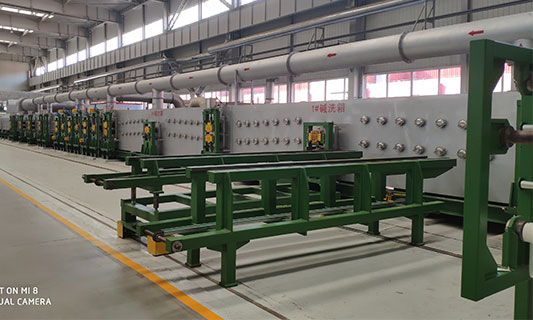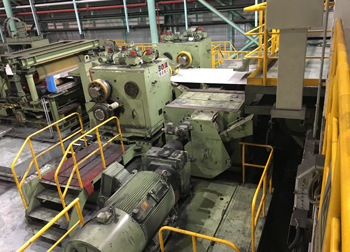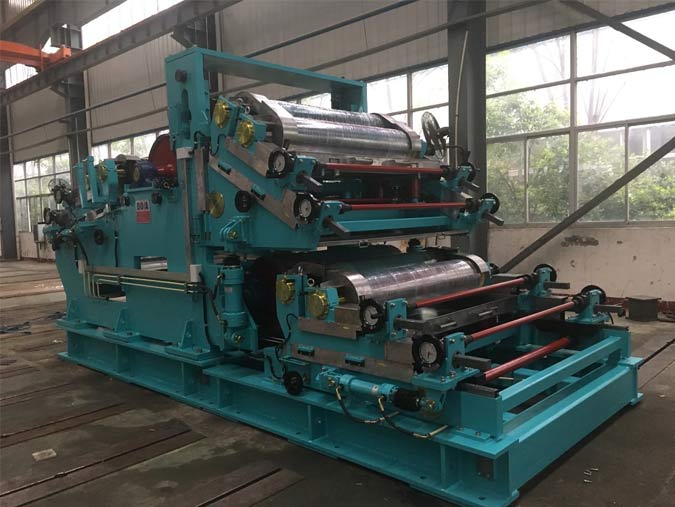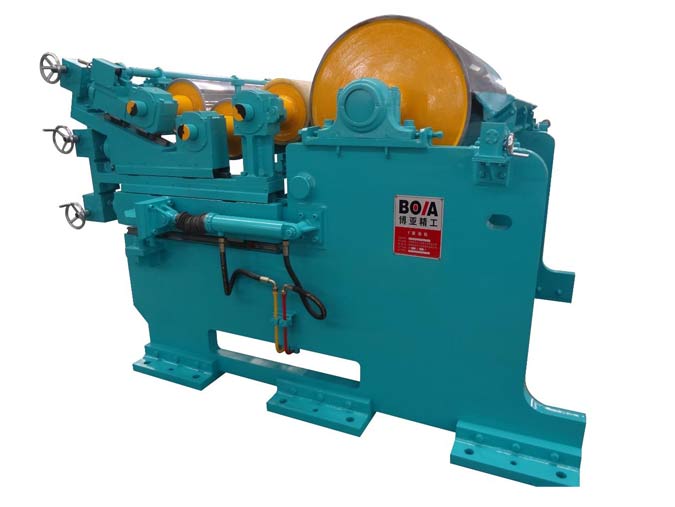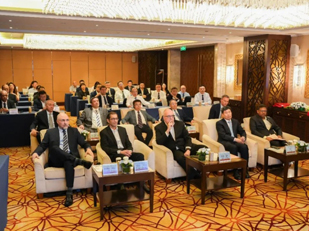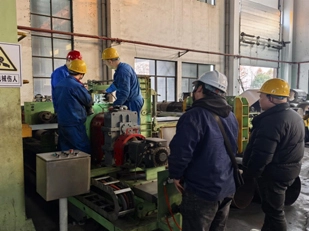Characteristics and Applications of the Tension Leveler
The stretch-bending straightening unit can effectively eliminate strip shape defects such as wave and warping and has been widely used in the production of high-precision aluminum strips.
1. The working principles of the tension leveler
The bending and straightening machine is based on the elastic-plastic extension theory of the material for the strip to be leveled. And the basic principle is that the strip to be straightened is continuously passed through multiple small-diameter bending rolls arranged alternately up and down under the tension applied by the tension roller group, and plastic longitudinal extension is produced along the length direction under the combined action of stretching and bending. This makes the length of each longitudinal fiber of the strip tend to be the same, reduces the unevenness of the longitudinal stress distribution inside the strip, and improves the straightness of the strip.
2. Features of the tension leveler
The stretch-bending straightening machine is mainly composed of two parts. One is the straightening unit, and the other is the tension roller group and its transmission part. The straightening unit includes a bending roll group that produces plastic extension and eliminates plate-shaped defects, and a straightening roll that is responsible for eliminating horizontal and longitudinal warping. The tension roller group is composed of a population tension roller group and an exit tension roller group, and is responsible for providing the tension required for straightening.
3. The structures and characteristics of the bending roll group and the straightening unit frame
The bending roll set is the core of the stretch-bending straightening unit, which produces the elongation required to level the strip. According to the basic theory of stretch-bending and straightening, the bending roll group must be composed of at least three bending rolls. When the strip passes through the first two bending rolls, it is bent twice in opposite bending directions. Under the combined action of bending stress and tensile stress, plastic deformation occurs across the entire thickness of the strip. The third bending roll is used to balance the two bendings. After the residual bend. The reason is that the work consumed by the strip bending on the bending roll is related to the difference between the front and rear tension of the strip, so the applied tension on the second bending roll is greater than that on the first bending roll. And this will result in the bending of the strip on the two bending rolls. Although the directions are opposite, they are not the same. While the extension is generated, there is residual bending, so a third bending roll (correction roll) is needed to eliminate it. Therefore, the arrangement of the bending rollers must be such that positive and negative bending occur alternately, and finally, a correction leveling roller to eliminate residual bending is arranged.
Reference website: Thesis Characteristics and Application of Stretch Bending and Straightening Unit
Topics You May Be Interested in:
Roll Coating Process
Backup Rolls
Precision Blanking
Conventional Stamping
Rubber Roller Coating Machine
Press Blanking
Popular BOYA Flat Metal Processing Machinery
Other Articles about BOYA Flat Metal Processing Machinery

 English
English 